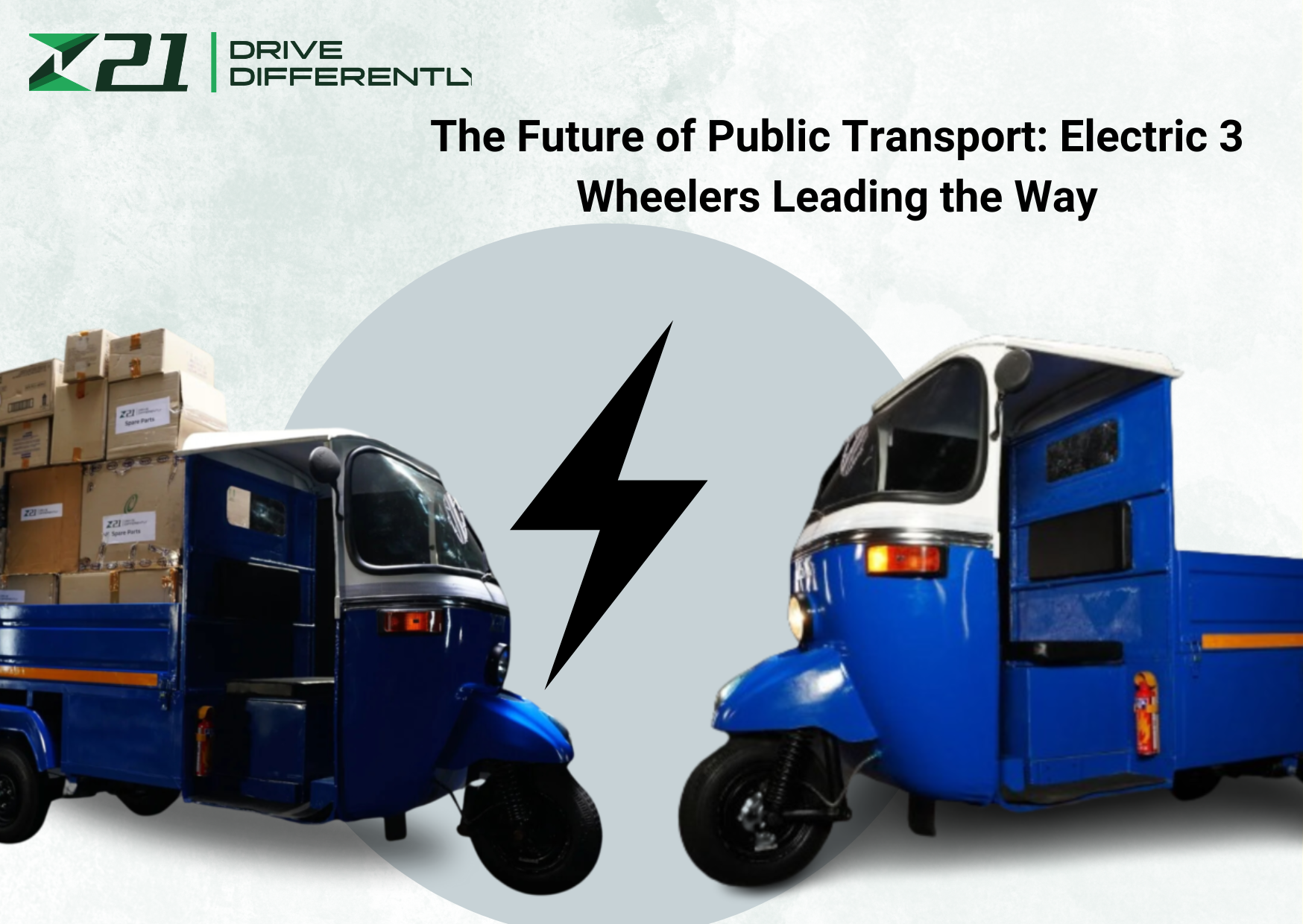That’s why public transport systems are under ever greater pressure to provide efficient, cheap, and eco-friendly transport for people living in cities. Electric 3 Wheelers in Public Transport is a revolutionary solution in this regard. These vehicles are affordable, environmentally friendly and flexible in their use and are ideal in cities that seek to embrace sustainable transport.
The present article focuses on the prospects of electric three-wheelers, their advantages and disadvantages, as well as the future of this market.
1. Why Electric 3 Wheeler Is on the Rise
Electric three-wheelers are quickly becoming popular for use in public transportation since they possess many special features.
a. The responsibility for the environment is gradually being transferred
Since climate change is still an emerging global concern, the main objective is the reduction of emissions from vehicles. These electric three-wheelers are clean vehicles with no tailpipe emissions: a definite advancement over the regular auto-rickshaw designs.
b. Economic Feasibility
The operating costs of electric vehicles are lower than those of the internal combustion engine vehicles. Goals such as low cost of electricity, low maintenance costs, and subsidies from the government make the use of EVs appealing to operators of public transport.
c. Urban Mobility Needs
These days, cities are continuing to become more congested and to drive through traffic-congested roads, it is necessary to have a small and compact car. Electric three-wheelers are particularly effective in such conditions, enabling the constant connection of transport interchanges with unconnected communities.
2. Advantages of using electric 3 wheelers in public transport.
a. Eco-Friendliness
The current three wheelers are the major source of air borne particulate matter pollution and noise pollution. On the other hand electric variants greatly reduce these impacts advocating for cleaner and quieter cities.
b. Affordability for Commuters
The reachable operating costs of electric three wheelers make it possible for the operators to charge reasonable fares hence enhancing the public transport accessibility to the daily users.
c. Expanding the last mile bandwidth
The main problem that public transportation faces is the so-called ‘first and last mile, ‘or the distance between stations and the ultimate point of the passenger’s trip. Electric three-wheelers adequately serve this purpose in a manner that provides full coverage for the entire city.
- d. Employment Opportunities
- A growing market for electric three-wheelers creates new opportunities that can be production, assembly, and repair of the vehicles themselves, managing fleets of the vehicles, and building charging facilities for the vehicles.
3. The Use of Illustrations in Electric 3 Wheelers in Public Transport Systems
Electric three-wheelers are versatile and can be integrated into various facets of public transport:
- Ride-Sharing Services: Most of the service providers in the ride sharing services are now adopting the use of electric three wheelers to cut cost and pollution.
- Feeder Services: These vehicles transport people from the originating transit centers including the metro and train stations to other surrounding communities.
- Specialized Services: Electric three-wheelers can be used in the shuttle services to and from school, shuttle services to and from corporate business or for the specific region.
4. Challenges That Families That Adopt Face
While the advantages of Electric 3 Wheelers in Public Transport are evident, certain hurdles must be addressed to ensure widespread adoption:
a. This is especially the case because the charging facilities are still scarce and there are only a few charges.
- Problem: A few accessible charging stations can demotivate operators.
- Solution: The governments and private automobile companies have to come together and build a strong infrastructure for charging stations and battery swap centers.
b. Battery Limitations
- Problem: Concerns for the operators include restricted mobility and short battery life, especially when using Electric 3 Wheelers in Public Transport for traversing large distances.
- Solution: The drawbacks mentioned above are being overcome by newer and better battery types like the solid-state batteries and fast charging batteries.
c. Initial Cost Barriers
- Problem: New energy vehicles usually cost more than traditional vehicles at the initial stage, especially electric three-wheelers.
- Solution: To ensure that these vehicles are affordable, incentives in form of subsidies, tax holidays, and easy financing could be offered to the buyers.
d. The majority of people are not aware of the problem and they do not accept it.
- Problem: The general public and operators continue to be unfamiliar with the advantages associated with Electric 3 Wheelers in Public Transport.
- Solution: Social marketing involves creation of campaigns which will create awareness of the products, this coupled with pilot projects will demonstrate the feasibility of using electric vehicles.
5. Government Policies and Support in the Implementation of the Paper
Electric three-wheelers are being promoted by governments all over the world as a way to make the automotive industry better. Policies aimed at promoting EVs include:
- Subsidies: Access to loans for the acquisition of vehicles so as to down payment costs.
- Tax Exemptions: Exemptions in vehicle registration charges and road taxes.
- Infrastructure Investments: Support for Charging points and Battery swapping stations.
- Fleet Electrification Mandates: Promoting the change of public and private operators to electric vehicles.
6. Opportunities and Challenges in the Future of Electric 3 Wheelers for Public Transportation
The future of mobility in the urban areas is certainly electric and the use of three-wheelers is already a reality. Key trends to watch include:
- Smart Integration: IoT integrated solutions for real time tracking and controlling of the fleets.
- Battery Innovations: New generation of batteries will improve range and charging capabilities.
- Autonomous Capabilities: Automated electric three-wheelers are likely to be produced within the next 5 to 10 years.
- Widespread Adoption: The use of electric three-wheelers will soon become the order of the day as infrastructure advances and costs reduce in public transport in different countries.
The use of Electric 3 Wheelers in Public Transport is an indication of the progress towards the improvement of efficient structures in the mobility systems. Through solving issues related to movement in urban environments, decreasing the negative effects on the environment, and lowering the expenses of people commuting, such vehicles are changing the functioning of cities.
In the future, adopting electric three-wheelers will be to the advantage of public transport systems and the environment in general. To know about the new generation products and best quality electric three-wheelers, visit the company profile of Zero21 Autos, the leading player in the green mobility solutions.


